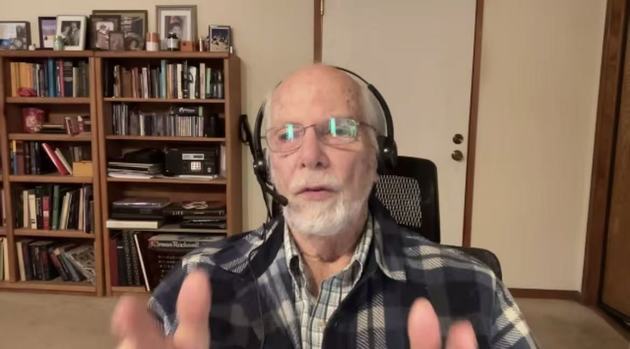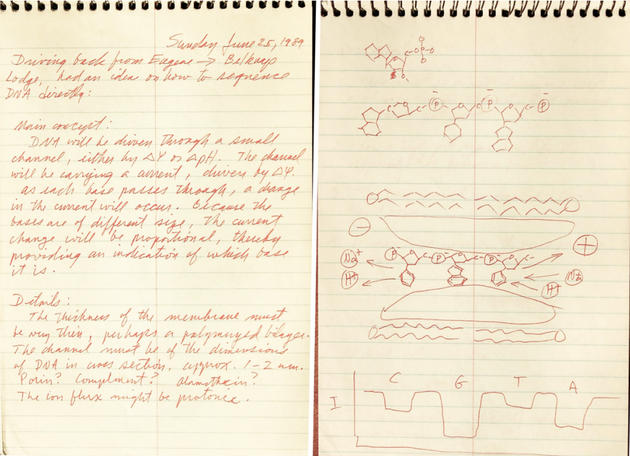Editor's Note:
In the Dialogue with Scientists series, National Business Daily (NBD) examines how the frontiers of discovery are shifting in the wake of the 2025 Nobel Prizes. From molecular design to life’s origins, the conversations with the pioneering minds reveal how modern science advances—not by certainty, but by curiosity and doubt.
When Professor David Deamer of the University of California, Santa Cruz first proposed pulling a single strand of DNA through a nanoscopic pore to read its sequence, his peers called it impossible. Today, that once-fantastical idea has become one of the most transformative technologies in modern biology.
In an exclusive interview with National Business Daily (NBD), Prof. Deamer, one of the founding pioneers of nanopore sequencing, recounted the decades-long journey from skepticism to scientific breakthrough, and reflected on how curiosity continues to drive discovery.

Dave Deamer
He sees the next decade as an era of medical revolution—where doctors might use a drop of blood to detect cancers or genetic defects overnight. He envisions nanopore sequencers venturing beyond Earth, searching Martian ice for traces of ancient life.
As artificial intelligence reshapes science, Deamer remains grounded: "AI is not curious," he told NBD. "It's still human beings who make the information and use it."
At 86, his advice to young scientists is simple but enduring: follow your curiosity—because curiosity will always take you somewhere new.
The Birth of an "Impossible" Idea

The original notebook with a sketch of nanopore sequencing.
NBD: When you first conceived of pulling a single DNA strand through a tiny pore, it was met with skepticism. What gave you the confidence to proceed?
Deamer: There were three hurdles that looked so impossible that most people would never have thought this could work. But we had time, we had curiosity. A scientist is always interested in whether their ideas will work. We just got started and ignored the skepticism because we were skeptical ourselves. We simply said, "let's try it out and see what happens."
The first hurdle was to capture a single strand of DNA in solution and pull it through a nanoscopic pore. In 1993, with the help of John Kasianowicz, a scientist at the National Institute for Science and Technology, we used a protein pore called hemolysin. When we added RNA, right away we saw these millisecond-long blockades in the ionic current. Each one was a single molecule passing through the pore. We knew then we had overcome the first hurdle.
The second hurdle was that the DNA was going through too fast - half a million bases per second. My postdoc, colleague, Mark Akeson, solved this. He found what we call a motor protein. It grasps the DNA and ratchets it through about a thousand times slower, down to 500 bases per second.
The last problem was "basecalling"—translating the electrical signals into A, T, C, G. We could not have done it, we didn't have the technology or the money. That was what Oxford Nanopore did. They did a wonderful job. It was a true collaboration between academia and industry.
The Next Decade of Diagnosis: Nanopores Might Unlock Early Cancer Detection
Photo generated by AI
NBD: What do you believe is the most important trend that will define the future of molecular sensing in the next 10 or 20 years?
Deamer: Medical diagnostic applications. It's going to be very different 10 years from now.
Two years ago, a group of doctors at Stanford used our PromethION sequencer to analyze the genome of a young boy with an unknown genetic disease. They set a Guinness World Record, completing the human genome from start to finish in just five hours. In doing so, they discovered a defect causing his heart disease and were able to provide a life-saving diagnosis.
I would guess that 10 years from now, doctors will have immediate access to sequencing in their offices. We'll be able to give a drop of blood, and overnight they will be able to see all kinds of things about our genome.
The most exciting application will be early cancer detection. When a cancer tissue begins to grow, it gives off nucleic acids encased in little vesicles called extracellular vesicles (EVs). These vesicles circulate in the blood and contain fragments of RNA and DNA from the tumor cell. We might be able to analyze that by nanopore sequencing, and if we can, we might get information about a disease process very early on and be able to have therapy begin quickly.
AI: A Powerful Assistant, But Not a Curious Mind

Photo/VCG
NBD: How will Artificial Intelligence (AI) transform the way nanopore sequencing is used?
Deamer: AI is going to be very important for figuring out the patterns we don't yet understand in our genome. Most of our genome is what we call "junk DNA," just stuff left over from human evolution. Only a tiny fraction is in charge of making you who you are. AI will help us figure out what those hidden patterns mean.
But you've got to keep in mind that AI works with information generated by human beings. AI is not curious, and it doesn't sit there and think about things. We control AI, and despite all the concerns about it becoming so powerful to take over—I don't think that's a real concern. The value of AI is like the internet and email; it expands the information base for each of us, but it's still human beings that make the information, and it's human beings that use it.
Computational approaches like machine learning and several others have already been crucial for speeding up our ability to access information. I think as AI develops, it will become part of our daily lives.
The Interstellar Search: How Nanopore Sequencers Use "Electric Signals" to Hunt for Martian DNA
NBD: You've now been a proponent of sending nanopore sequencers to Mars to search for extraterrestrial life. And today we already see them being used on the International Space Station. What is the most exciting potential application for you personally?
Deamer: Sending a nanopore to Mars to collect ice from under the surface. If life began there 3.5 billion years ago, about the same time that it began on Earth, we will probably be able to see fragments of nucleic acids.
The signal of an ionic current blockade is unique to nucleic acids. So if I saw a blockade in an instrument that was sitting on the Mars surface looking at Martian water that had been frozen but was melted for the nanopore, then I would be able to say, yes, there was life on Mars at about the same time that life began on Earth. That would be the most exciting possible thing to be able to say that life existed elsewhere.
It may even be if the genetic code used by the Martian life was the same as life on Earth. It could be that life actually began on Mars and was delivered to the Earth on meteorites, and that we are all Martians, that we began on Mars.
To Young People: Let Curiosity Guide You
NBD: In 2023, you were honored with the Golden Goose Award for your work, which recognizes research that sounded silly at first but had a high impact. What message does that award send?
Deamer: The Golden Goose Award recognizes federally funded, silly sounding research award that has made an impact on our society.
Science is exploring. We are like prospectors looking for gold, but the gold that we're looking for is new knowledge.
For young people, the message is to let curiosity guide you. Curiosity is the driver of science and curiosity will take you to many new places to explore. So don't be afraid to be curious, don't be afraid to have people make fun of you because most people are not very curious. You've got to follow your own curiosity and do what you think is the most significant kind of research.



 川公网安备 51019002001991号
川公网安备 51019002001991号





